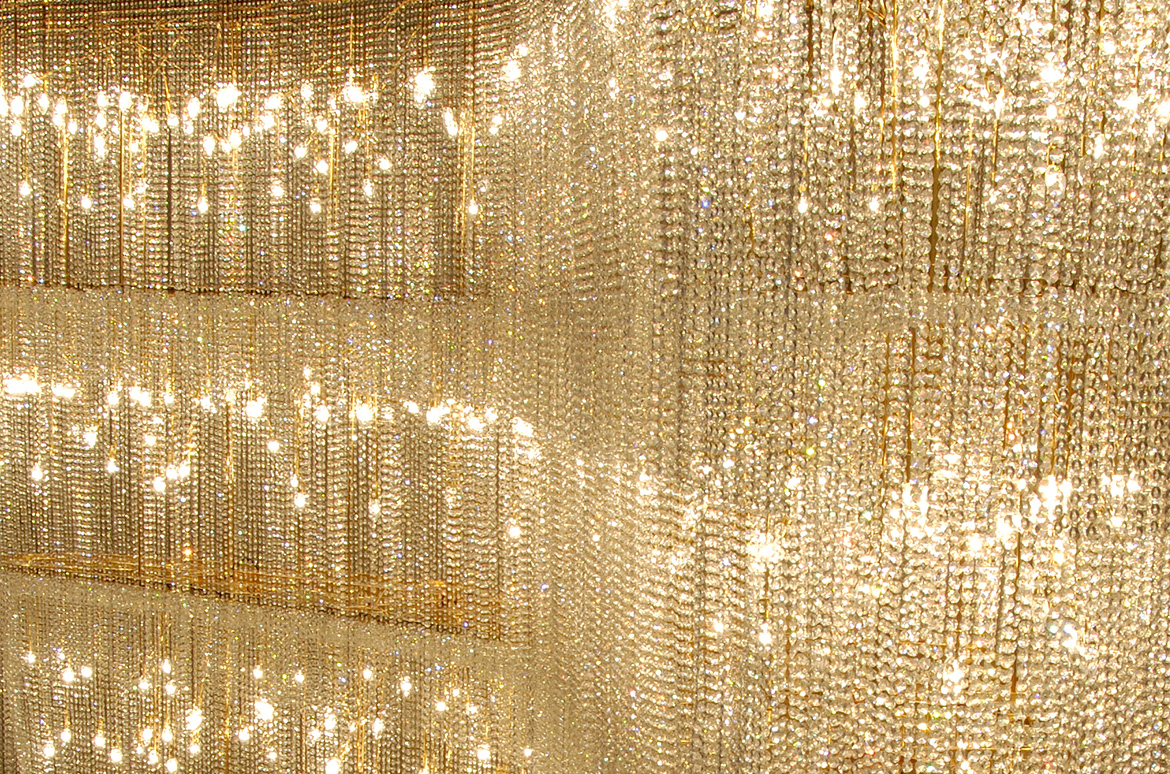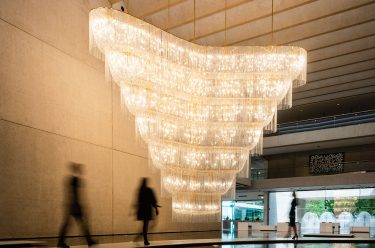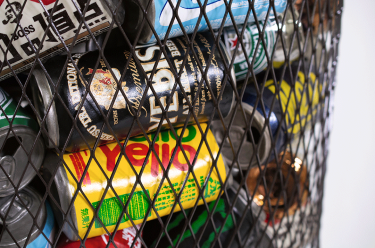Boomerang 2006 was originally the centrepiece of Ai Weiwei’s participation in ‘The 5th Asia Pacific Triennial of Contemporary Art’ (APT5). An extravagant, tiered, waterfall-style chandelier shaped after the titular throwing tool, with a span of more than eight metres and a drop of seven, it had an imposing presence as it hung above the water in the Queensland Art Gallery, anchoring a display of some of the artist’s most iconic works.
Ai Weiwei ‘Boomerang’
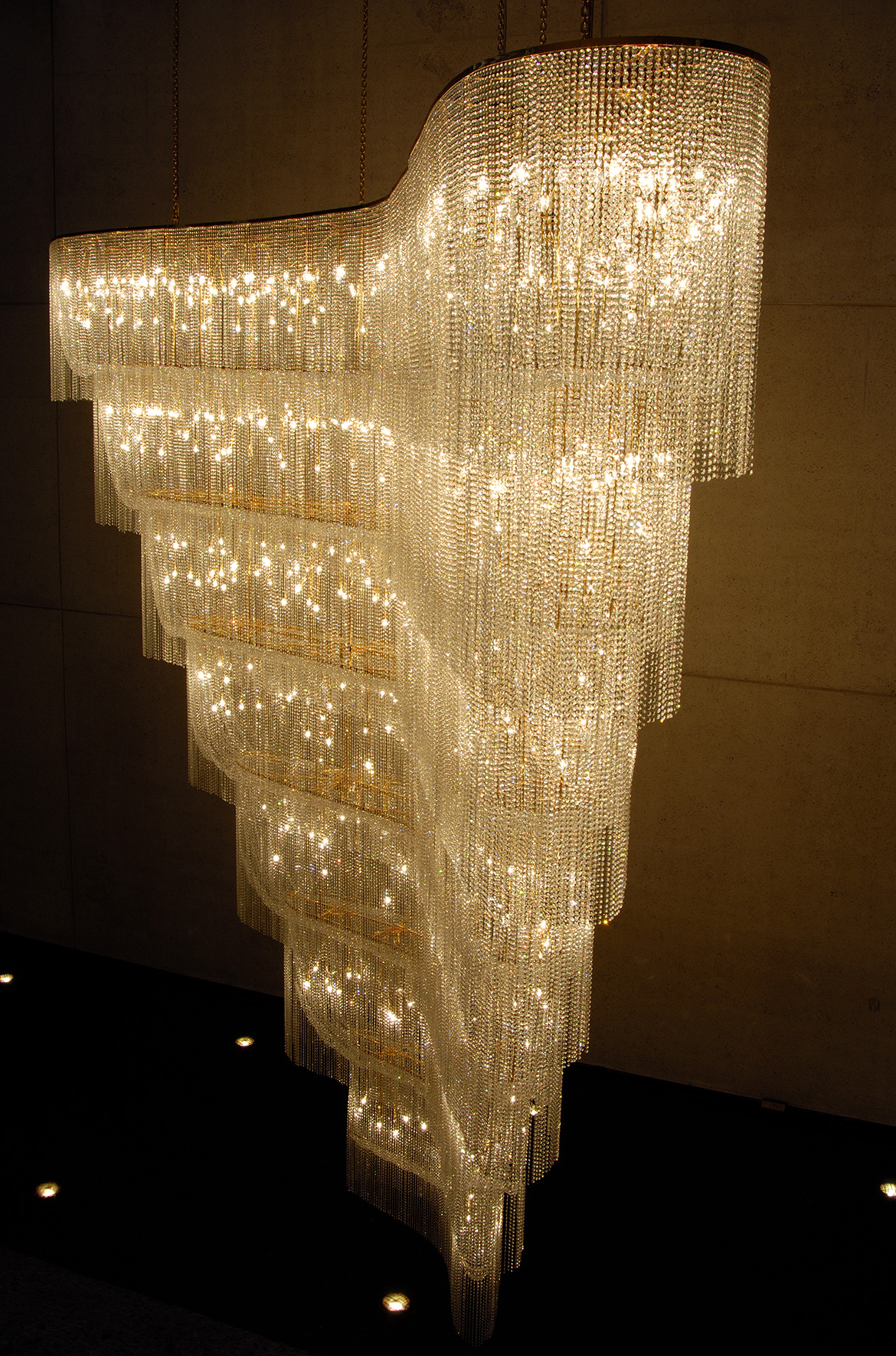
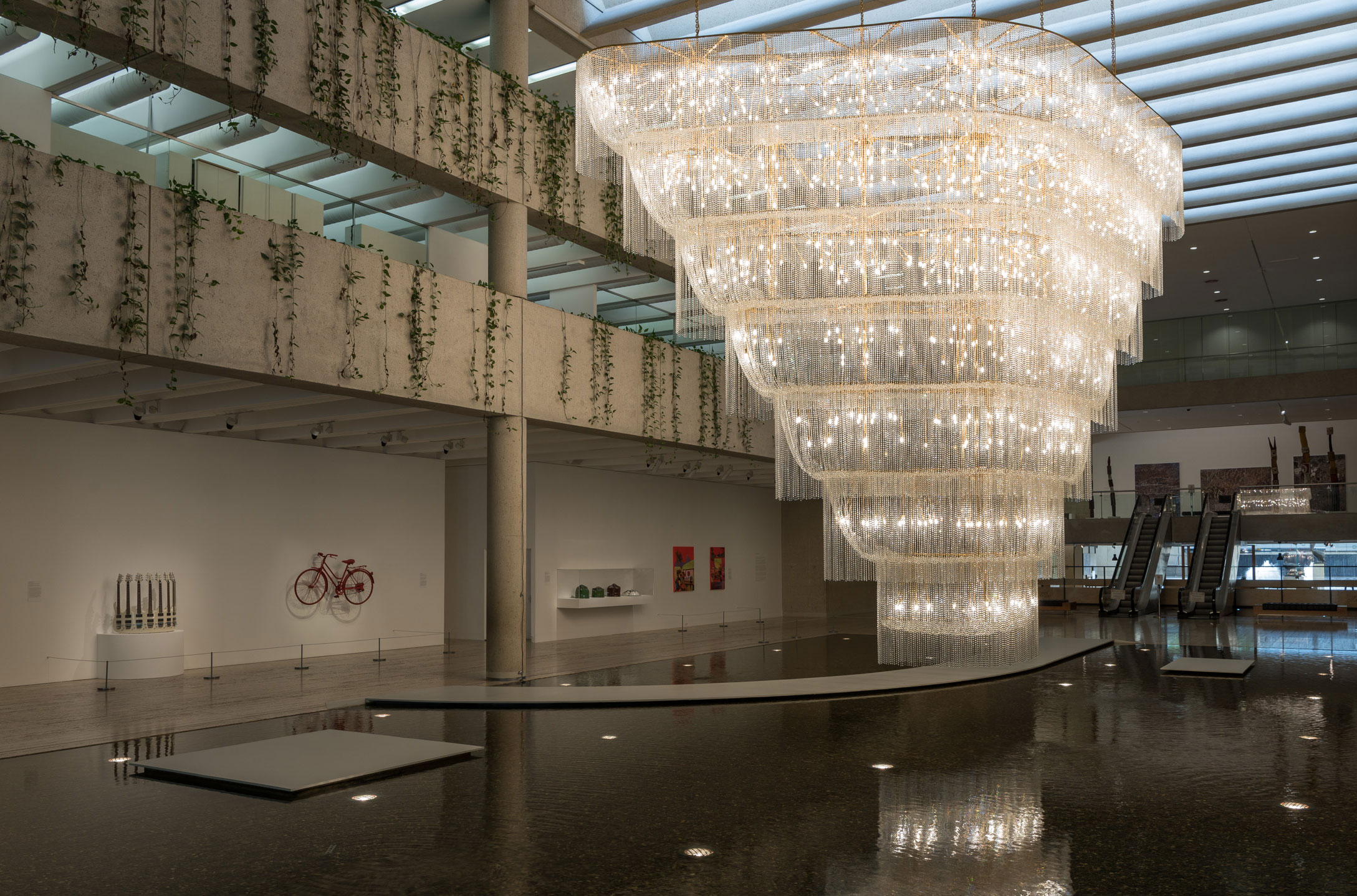
Ai Weiwei has long acknowledged the influence of Marcel Duchamp, a key figure in the Dada and surrealist movements of the early twentieth century. Ai encountered Duchamp’s work first-hand after arriving in New York in 1981 as a young artist, and he was deeply impressed with the wit and irreverence of the Dadaist’s ‘ready-mades’.
Challenges to convention like Duchamp’s iconic Fountain 1917 opened up new possibilities for art, while highlighting the ways in which an object’s value and meaning can shift when it changes context. Accordingly, Boomerang takes the chandelier, with its connotations of wealth and opulence, and enlarges it to absurd scale, shaping it into the form of an object associated with exotic conceptions of Australia.
Zico Albaiquni ‘The Imbroglio Tropical Paradise’
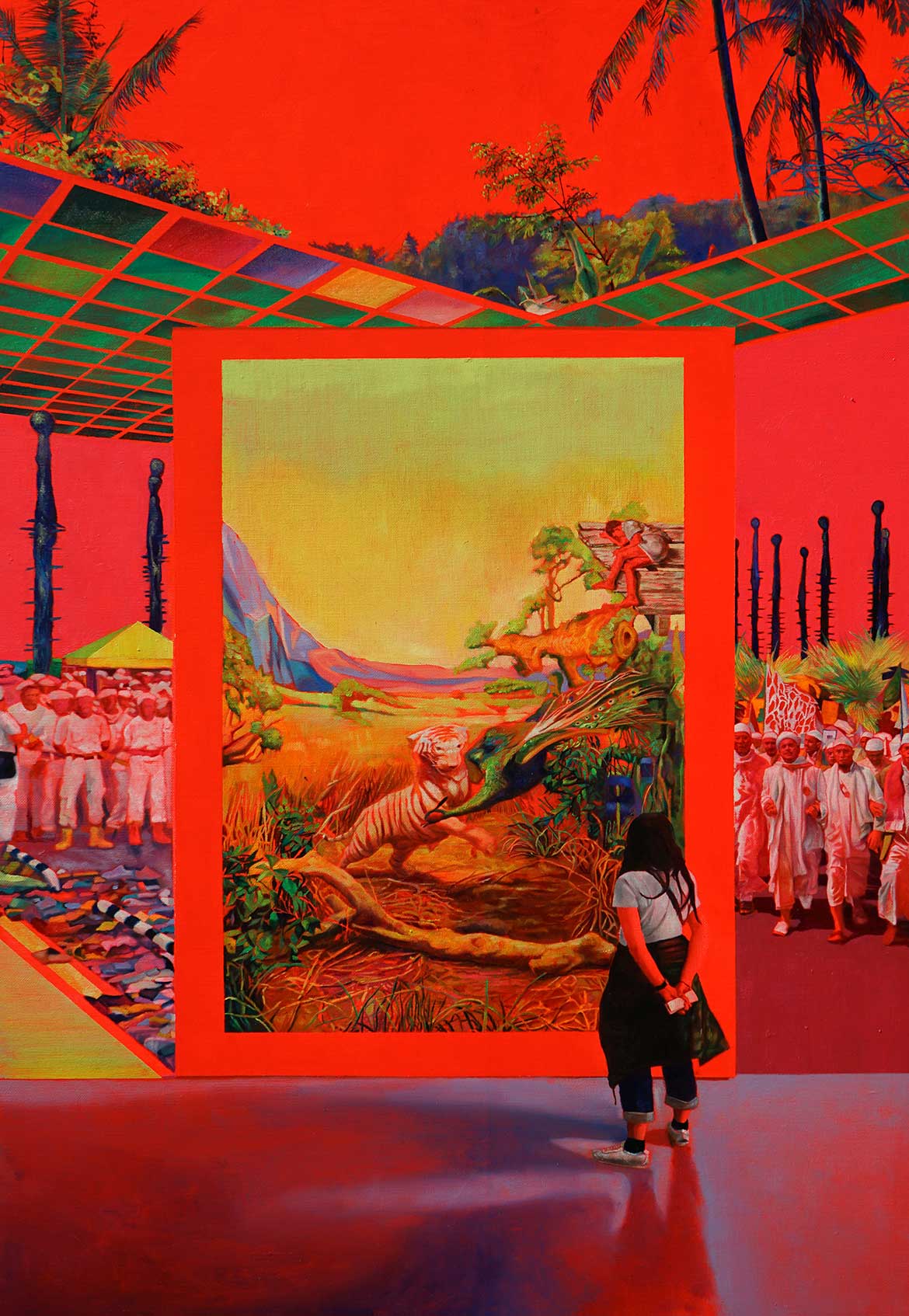
Complementing Ai Weiwei’s extravagant gesture are works by Asian artists who similarly alter and re-contextualise objects and images between different frameworks. Tuan Andrew Nguyen’s painting series ‘Proposal for a Vietnamese landscape’ depicts the profusion of visual information filling city walls and public spaces in Vietnam, where officially sanctioned propaganda murals sit side by side with consumer advertising, stencilling and graffiti.
Zico Albaiquni’s canvases similarly borrow imagery from disparate sources; from the acclaimed nineteenth-century Indonesian painter Raden Saleh, to museum dioramas, tourist art, signature works by contemporary Indonesian artists and installation views from international exhibitions such as the Venice Biennale or Indonesian works at the inaugural Asia Pacific Triennial in 1993. Though pictorially fictive, Nguyen and Albaiquini’s multilayered compositions reflect real-world complexities, be they ideological systems or artistic inheritance.
Teppei Kaneuji ‘White discharge (Built-up objects #24)’
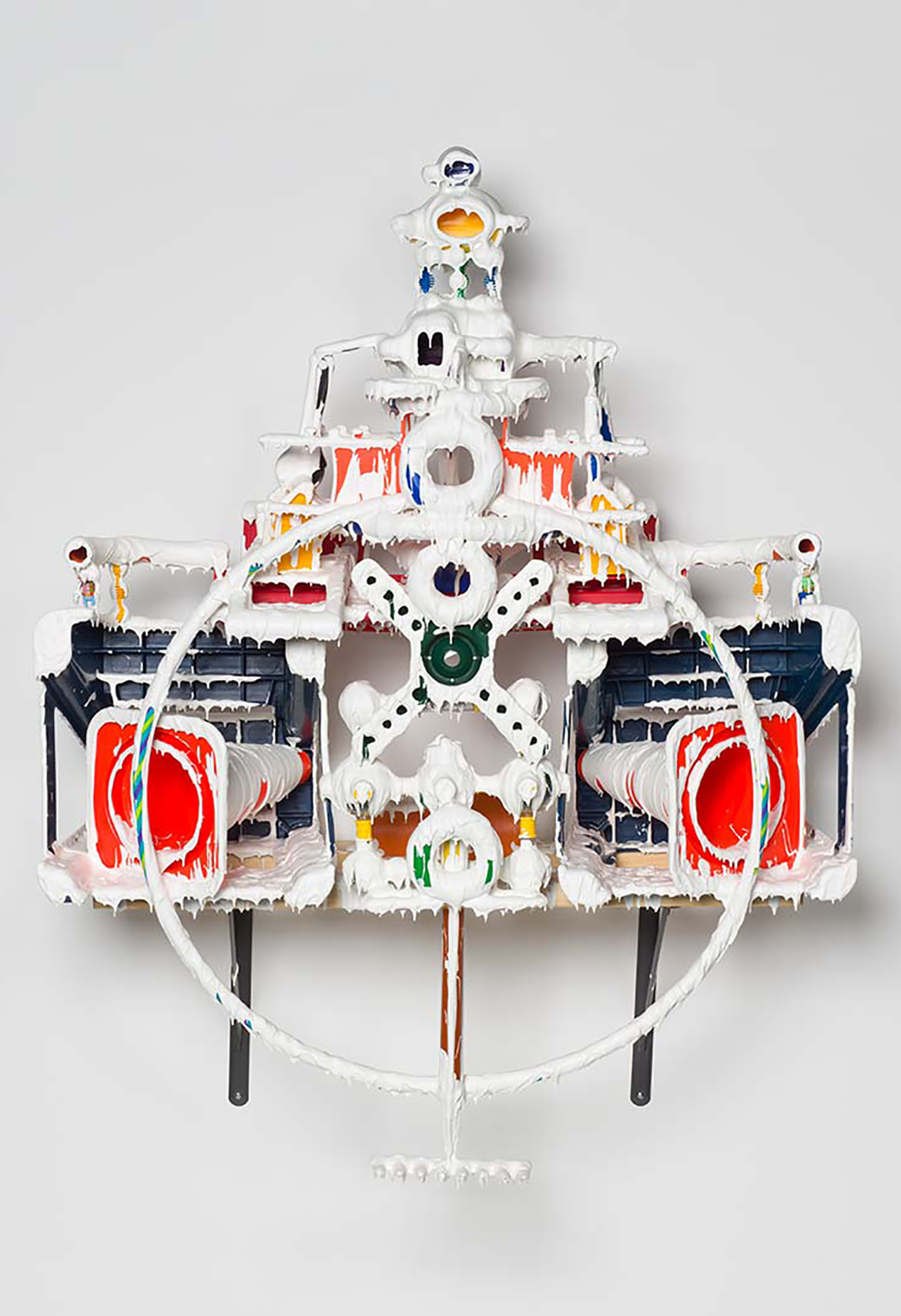
Erbossyn Meldibekov ‘Seasons in the Hindu Kush – Spring, Summer, Autumn, Winter’

Teppei Kaneuji’s semi-abstract assemblages also reflect the abundance of imagery and consumer products in contemporary life. Kaneuji’s wall-mounted sculpture White discharge (Built-up objects #24) 2013 consists of a host of low-cost plastic objects arranged with careful attention to shape and colour under a unifying layer of lumpy white resin. The components, designed for very practical purposes, have been stripped of their function in this new configuration, foregrounding their formal characteristics.
In contrast, Erbossyn Meldibekov’s Seasons in the Hindu Kush – Spring, Summer, Autumn, Winter 2009 repurposes functional objects into a figurative landscape. In this work, four Soviet-era cooking pots are battered and crushed to create shifting views of the great mountain system of Central Asia. The mountainous setting inspiring the work remains a site of military and social significance. Though the work has an element of Duchampian drollness, these pots bear the traces of a powerful force, implying a manifestation of violence.
Rudi Mantofani ‘Nada yang hilang (The lost note)’
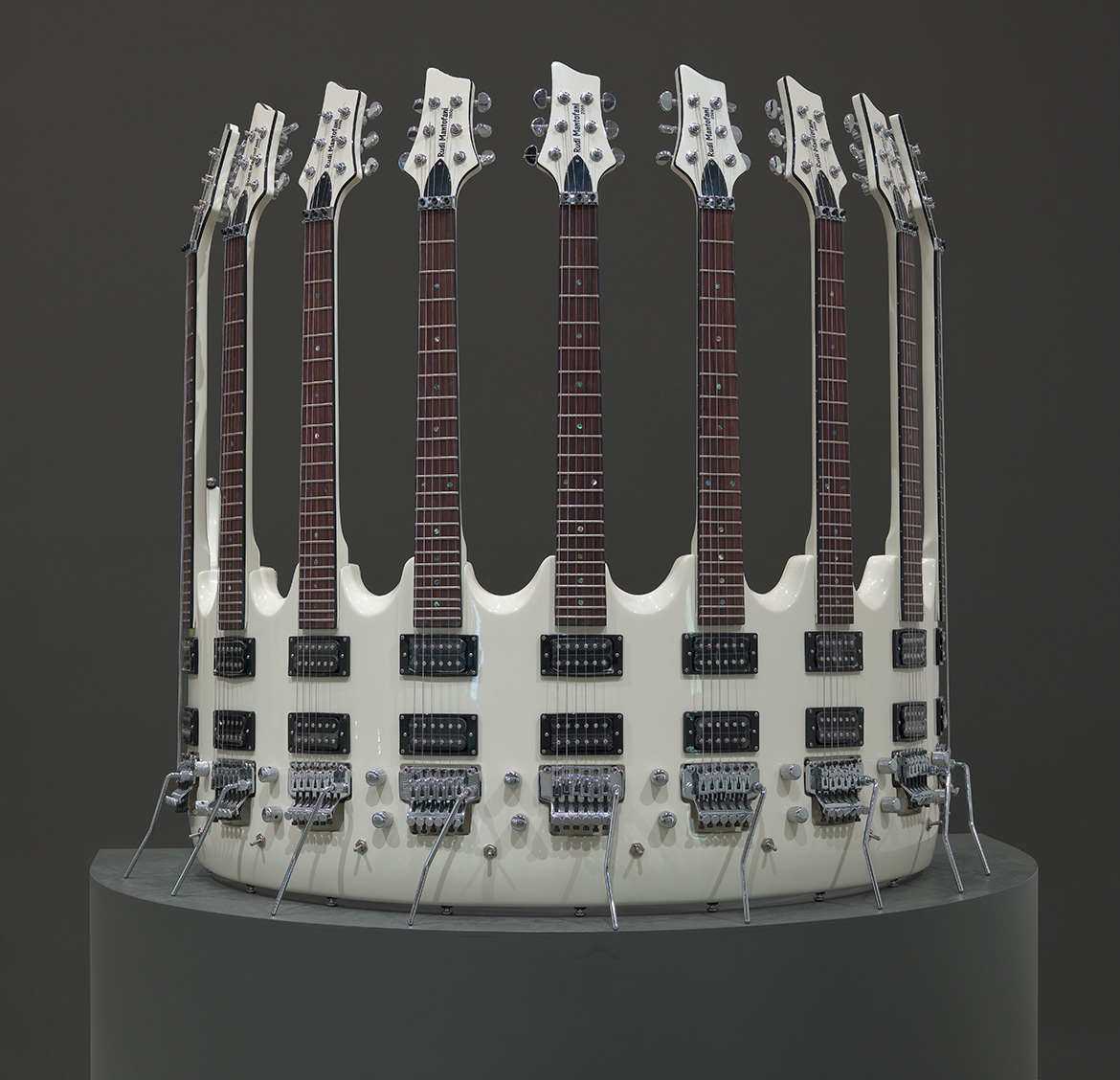
Nada yang hilang (The lost note) 2008 by Yogyakarta-based Rudi Mantofani is not actually a readymade, but rather a meticulously crafted, horseshoe-shaped melding of nine electric guitars. An absurdist parody of the multi-necked instruments of classic rock indulgence, it is arranged in such a way as to be physically unplayable. Nevertheless, its slick finish and clean lines suggest a degree of homage for the guitar as a highly fetishised pop-cultural symbol. Considered in the context contemporary Indonesia, it evokes further tensions between imported consumer culture and traditional social values.
Luyan Wang ‘Bicycle (20) – 1996 no.15/20’

Bicycle (20) – 1996 no. 15/20 1996 is one of the 20 ‘post-reform’ bicycles that were included in Wang Luyan’s installation Bicycle (20) – 1996 in the second Asia Pacific Triennial in 1996–97. Sourced in Brisbane from members of the public, the bikes were ‘reformed’ with a coat of red paint covering every component, including their tyres, and the addition of a second rear flywheel that caused them to travel backwards when pedalled forwards. They were examples of the artist’s predilection for creating paradoxical machines, altering the inner workings of common machinery so that internal forces would cancel each other out. For Wang, this negation of purpose and utility expresses his deeply held suspicion toward established ideas and systems, a sensibility common to the selection of errant objects assembled for this exhibition.
Reuben Keehan is Curator, Contemporary Asian Art, QAGOMA
#QAGOMA
